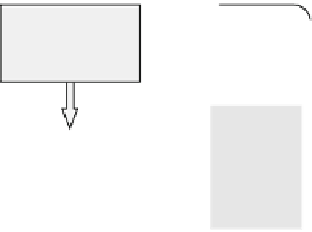Environmental Engineering Reference
In-Depth Information
goal is modified or the plan succeeds or fails. A reactive planner can quickly
assess the updated situation and switch to a new plan. The selection process is
kept fast by limiting the number of potential plans that have to be examined.
Sometimes this is accomplished by the higher-level control system, explicitly
listing all plans the reactive planner needs to examine. On other systems,
the set of plans is automatically constrained by indexing the plans on their
applicable context. At each decision step, only the context-appropriate plans
will have to be examined.
Reactive planners spend little time choosing the next plan, and therefore,
are appropriate for time critical situations. They are often used in the low-level
control of robot and robot-like systems, which have hard real-time deadlines.
Because reactive planners only examine a limited number of choices, they will
often make good local decisions and poor global ones. Another component of
the overall system architecture is usually made responsible for optimizing the
global objectives.
5.1.4 Model-Based Planners
Model-based planners use models to analyze the current situation and create
their plans. They represent this information symbolically with goals described
as desired changes in the environment.
Figure
5.5
shows the structure of a model-based planner. These systems
give careful focus to the process of updating their internal models. As part
of world-model update, these planners may create detailed submodels of the
internal status of sensors and actuators, and using their model, can extend
the direct measurements to determine the status of internal, but not directly
measured, subsystems.
Once an accurate model of the platform and world has been created, the
model-based planner examines the goals, and using its models, creates a plan
Update
Model
Execute
Plan
And
Return
Results
World
Model
Reason
on Model
Goals
Fig. 5.5.
Model-based planning








